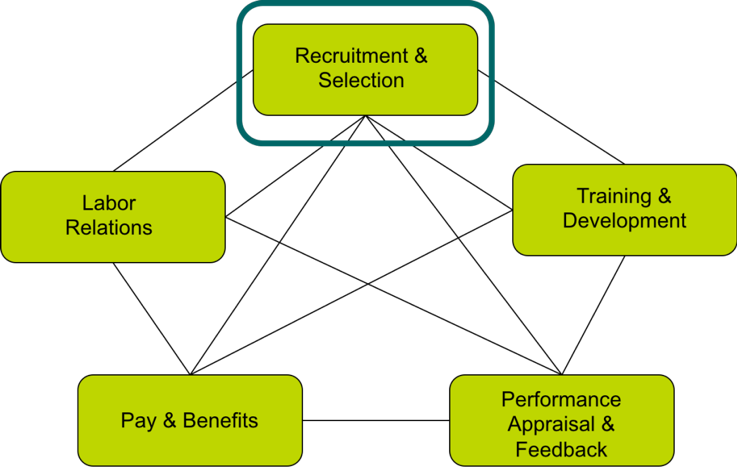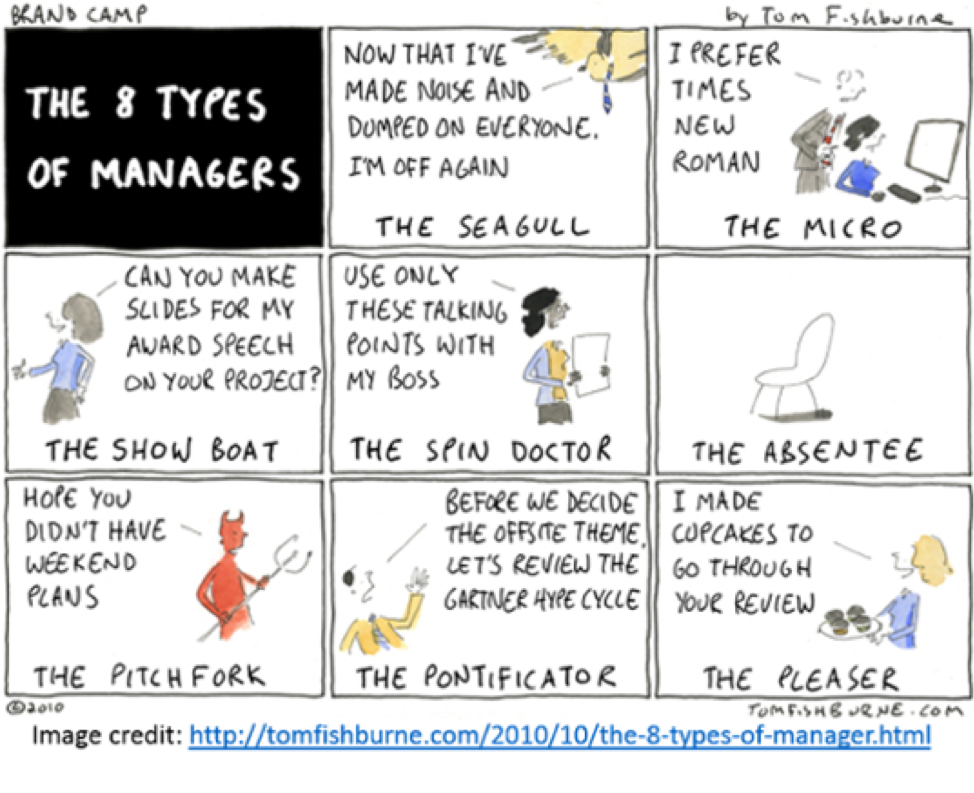By: Jennifer Casiano-Matos Edited by: Paulina Krzyszczyk and Brianna Alexander It is no secret that organizations with high-quality managers are more aligned to be successful and more likely to outperform their competition, as has been mentioned by LinkedIn and Forbes. But what are those “high-quality managers?” What does it take to be a good manager? The Office of Training and Education (OITE) from the National Institutes of Health (NIH) created a series of management seminars aimed at helping graduate students and post-doctoral fellows understand several aspects of management such as in which I was a participant. After participating in the seminar series, we finished the training with a two-day boot camp that summarized the main aspects of a management career. We covered topics such as interviewing, staffing, leadership, how to motivate the staff and how to manage everyday situations. The boot camp was conducted by Pat Sokolove, Ph.D. Deputy Director from the Office of Intramural Training and Education (OITE), Sharon Milgram, Ph.D. Director of the OITE and, Lori Conlan, Ph.D. Director of the Office of Postdoctoral Services and Career Services Center. One of the main discussions was how a good hire can be a future success and a company saving. I learned that every group member is essential for the success of a group and defining roles and responsibilities is a way of monitoring efficiency and needs. For example, there are many aspects that are as important as the hire himself, like salary and benefits negotiation, regulations and ethical issues, providing training and development, and last, monitoring performance, appraisal of the job and feedback. In the image below we can see how everything is interconnected to create what is a good hire.  Hiring Aspects to Consider for a New Hire. Adapted from Pat Sokolove PhD The process of finding a new hire starts with an analysis of what your group needs and the creation of a job description that aligns with the needs to be filled. Think about the skills that you need right away and skills that you are willing to provide through training. After advertising the job posting, the most important part of the process is screening the candidate pool and conducting interviews before making a final decision. Most of these steps are guided by human resources guidelines and regulations. Human resources often create the job descriptions, advertisements, and perform the initial screenings. Once the candidate pool is compiled, each should be individually evaluated to determine who to invite for an in-person interview. If you are working with a team, discussing the candidates with them would greatly help. Be strategic in the interview process; prepare a guideline for questions and be sure that all the candidates answer the same questions. Determine the expected answers beforehand. For a guideline of interview questions take a look online but don’t forget to check 30 Behavioral Interview Questions from LinkedIn® and “Legal vs. Illegal Interview Questions” from the University of Texas. After discussing Job Interviewing and Staffing, we discussed management techniques. First, you want to keep in mind what your staff needs from you as a manager. We covered the employee expectations from managers such as: good communication, establishing expectations (what you want from them), constructive feedback (how well I am doing), job-related support (how available is the manager), career-related support (growth potential and support), and psychosocial support (work-life balance). In the image below, you can see the 8 types of managers, and I have to say-- all of them have some negative qualities. For example, micromanagers can be very controlling which can hinder group growth. The absentee is a big No; as a manager, you need to be present and aware of the status of your team.
Hiring Aspects to Consider for a New Hire. Adapted from Pat Sokolove PhD The process of finding a new hire starts with an analysis of what your group needs and the creation of a job description that aligns with the needs to be filled. Think about the skills that you need right away and skills that you are willing to provide through training. After advertising the job posting, the most important part of the process is screening the candidate pool and conducting interviews before making a final decision. Most of these steps are guided by human resources guidelines and regulations. Human resources often create the job descriptions, advertisements, and perform the initial screenings. Once the candidate pool is compiled, each should be individually evaluated to determine who to invite for an in-person interview. If you are working with a team, discussing the candidates with them would greatly help. Be strategic in the interview process; prepare a guideline for questions and be sure that all the candidates answer the same questions. Determine the expected answers beforehand. For a guideline of interview questions take a look online but don’t forget to check 30 Behavioral Interview Questions from LinkedIn® and “Legal vs. Illegal Interview Questions” from the University of Texas. After discussing Job Interviewing and Staffing, we discussed management techniques. First, you want to keep in mind what your staff needs from you as a manager. We covered the employee expectations from managers such as: good communication, establishing expectations (what you want from them), constructive feedback (how well I am doing), job-related support (how available is the manager), career-related support (growth potential and support), and psychosocial support (work-life balance). In the image below, you can see the 8 types of managers, and I have to say-- all of them have some negative qualities. For example, micromanagers can be very controlling which can hinder group growth. The absentee is a big No; as a manager, you need to be present and aware of the status of your team.  After discussing management techniques, we talked about communication. We discussed that every person has their own communication style, however, the key is to practice listening before talking. In terms of providing feedback, be sure that it is positive and constructive and pay attention to non-verbal communication such as body language. One of the iJOBS blog posts that you can take a look at to master communication is Strategies for Managing Conflict and Feedback. Lastly, to keep your group members motivated, keep in mind their career and psychosocial expectations, be clear on the job-related expectations and provide feedback when those are met. Always remember the goals of your unit and how each person contributes to that goal. Creating SMART (Specific, Measurable, Achievable, Relevant and Time-bound) goals is the key for the success of a group. I noticed that there is not a single recipe for a good manager, however, keep in mind that controlling your emotions, being a good planner, a good listener, communicator, leader, and motivator are some of the key aspects of good management.
After discussing management techniques, we talked about communication. We discussed that every person has their own communication style, however, the key is to practice listening before talking. In terms of providing feedback, be sure that it is positive and constructive and pay attention to non-verbal communication such as body language. One of the iJOBS blog posts that you can take a look at to master communication is Strategies for Managing Conflict and Feedback. Lastly, to keep your group members motivated, keep in mind their career and psychosocial expectations, be clear on the job-related expectations and provide feedback when those are met. Always remember the goals of your unit and how each person contributes to that goal. Creating SMART (Specific, Measurable, Achievable, Relevant and Time-bound) goals is the key for the success of a group. I noticed that there is not a single recipe for a good manager, however, keep in mind that controlling your emotions, being a good planner, a good listener, communicator, leader, and motivator are some of the key aspects of good management.
iJOBS Blog